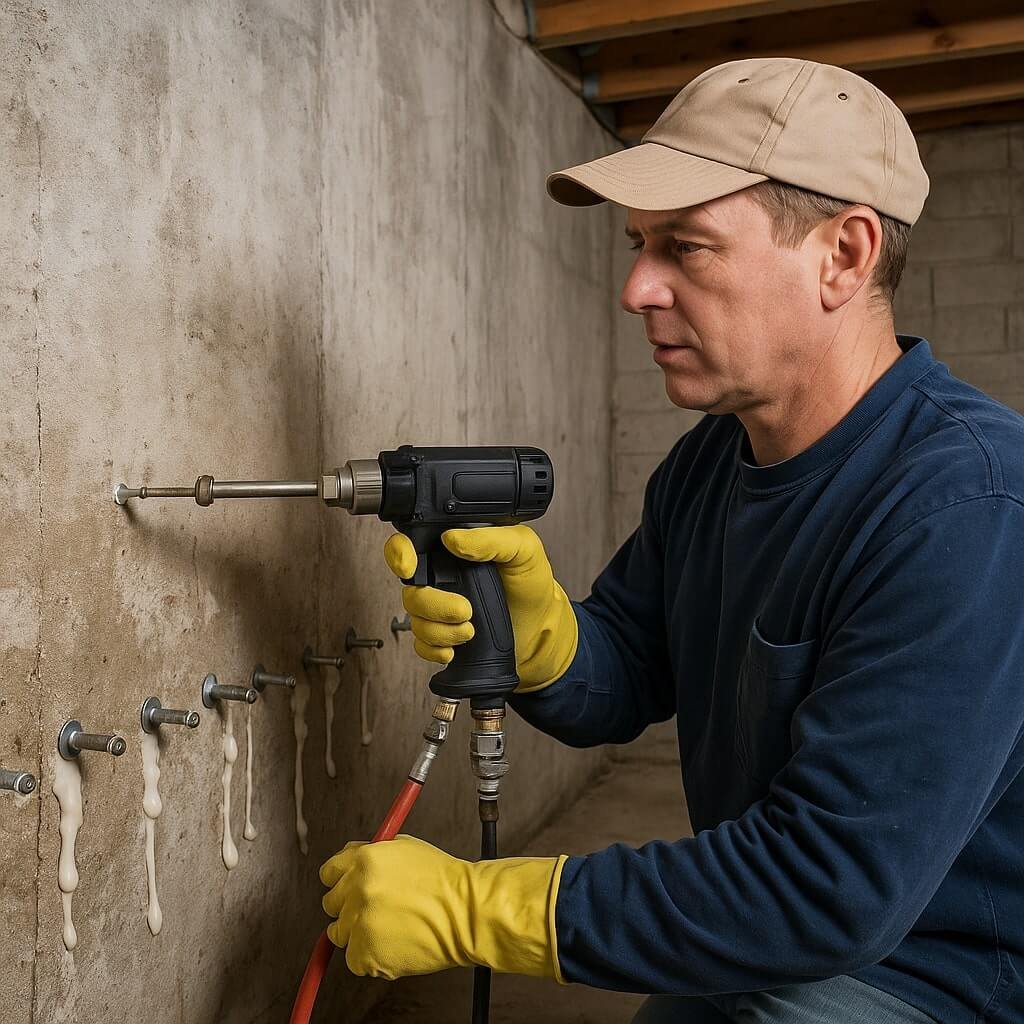A sump pump is essential for waterproofing your basement, as it actively removes excess water that can lead to flooding. When water levels rise, the pump automatically activates, preventing moisture buildup and protecting your home from damage. By keeping your basement dry, it helps lower humidity and discourages mold growth. However, understanding the different types of sump pumps and their installation is vital to maximize their effectiveness in your waterproofing strategy.
Key Takeaways
- A sump pump actively removes excess water, preventing flooding and moisture buildup in your basement.
- It helps maintain moisture control, reducing the risk of mold and mildew growth.
- Proper installation in the lowest part of the basement enhances water collection efficiency.
- Integrating the sump pump with drainage systems improves overall waterproofing effectiveness.
- Regular maintenance and inspections ensure the pump operates effectively during heavy rains.
Understanding the Function of a Sump Pump
A sump pump is an important component in maintaining a dry basement or crawl space. It typically consists of a pump, a sump basin, and a discharge pipe.
During the sump pump operation, water collects in the basin, triggering the pump to activate. This action effectively removes excess water, preventing flooding and moisture buildup.
Water collects in the sump basin, activating the pump to remove excess water and prevent flooding.
You’ll find that the float switch plays a significant role in detecting water levels, ensuring the pump activates when needed.
Regular maintenance of these sump pump components is essential for best performance, helping you protect your home from water damage and mold growth.
Keep your basement dry and safe!
Types of Sump Pumps and Their Applications

Choosing the right sump pump can greatly enhance your waterproofing strategy.
Submersible pumps are often installed below water level, making them effective for larger basements with high water tables. They operate quietly and are less visible, which is a bonus for aesthetics.
On the other hand, pedestal pumps sit above the sump pit, making maintenance easier. They’re ideal for smaller spaces and can handle less water volume efficiently.
Assess your basement’s needs—consider factors like size and water level fluctuations—to determine which type suits you best.
Investing in the right pump will guarantee effective moisture control and long-term protection.
How Sump Pumps Prevent Water Damage
When water seeps into your basement, it can lead to serious structural damage and mold growth, but a sump pump can effectively mitigate these risks.
By actively removing excess water, sump pumps serve as a vital component of your waterproofing techniques. They help maintain moisture control by detecting rising water levels and automatically pumping it away. This prevents water from pooling and infiltrating your living space, protecting your foundation and belongings.
Furthermore, a sump pump reduces humidity, discouraging mold and mildew growth, which can harm both your health and home.
Investing in a sump pump is essential for safeguarding your basement.
The Importance of Proper Installation and Maintenance

Proper installation and regular maintenance of your sump pump are essential to ensure it operates effectively and protects your home from water damage.
Start by following specific installation tips, like placing the pump in the lowest part of your basement and ensuring it’s connected to a proper drainage system.
Once installed, set up maintenance schedules to check for clogs, test the pump, and clean the basin regularly.
Don’t forget to inspect the discharge line for obstructions.
Integrating Sump Pumps Into Your Waterproofing Plan
Integrating a sump pump into your waterproofing plan is vital for effective moisture management in your home.
To achieve successful sump pump integration, first assess your basement’s vulnerability to water intrusion. Combine the sump pump with other waterproofing strategies, such as sealing cracks and installing drainage systems, to enhance its effectiveness.
Position the sump pump in the lowest part of your basement to guarantee ideal water collection. Regularly check and maintain the pump to prevent failure during heavy rains.
Conclusion
In conclusion, a sump pump is essential for keeping your basement dry and protected from water damage. By understanding its function and types, you can choose the right pump for your needs. Don’t forget that proper installation and regular maintenance are key to ensuring its effectiveness. Integrating a sump pump into your waterproofing strategy not only prevents flooding but also helps maintain a healthy environment by reducing humidity and discouraging mold growth. Take action to safeguard your home today!




